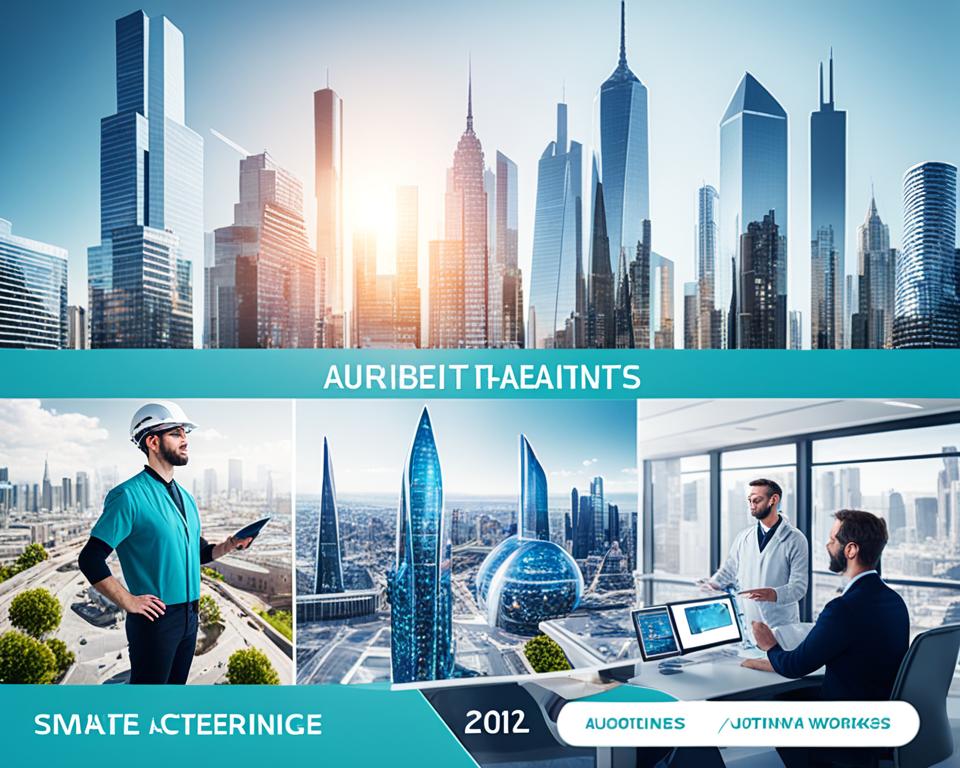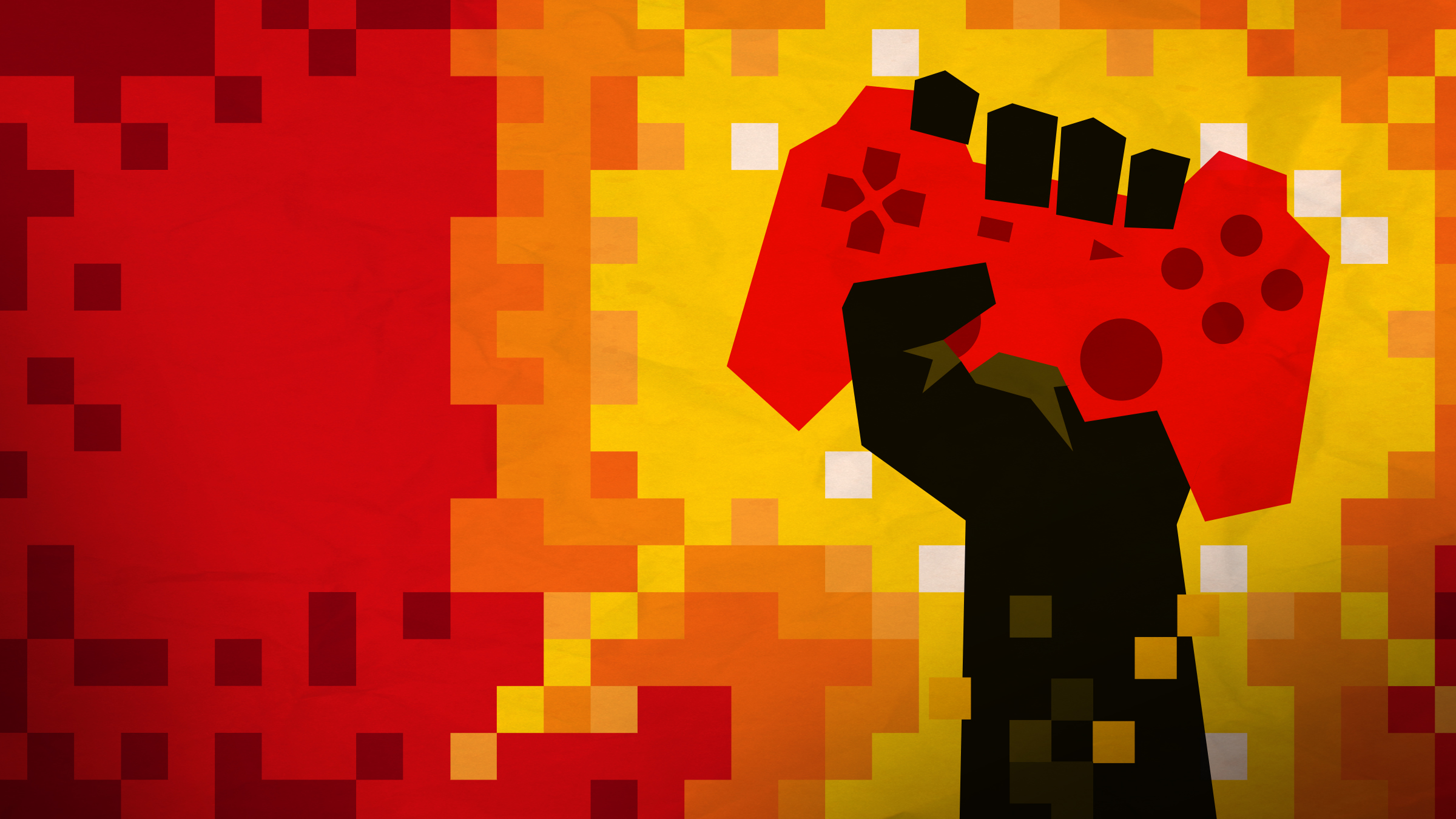Work is changing fast. This affects both groups and individuals. The future of jobs is shaped by big forces like the lack of workers, the fight for skilled people, and the move to automation and AI.
Right now, only 26% of CEOs have a good plan for future work. Companies need to think about how to make places where their workers can do well, even if they are far away. If they don’t take care of what workers really need for their work, health, and joy, they might lose their workers.
The world of work is still changing. To make the most of the future workforce, we must understand how jobs and workplaces are changing. Things like remote work, part-office and part-remote work, and where jobs will grow are all key.
Companies that get ahead are using digital tools and focusing on finding and training their people. This way, they are ready for the future.
Forces Reshaping the Workplace
The workplace is changing a lot, thanks to big economic, social, and tech changes. These factors are not just altering our jobs but how we live and connect. This shift brings new chances and challenges for everyone in and out of work.
Macroeconomic, Social, and Technological Drivers
The world’s economy, how we spend money, and new tech are shifting the job scene. The pandemic sped up these changes, focusing more on working from home and a mix of in-office and remote work. It also boosted the gig economy and made us think more about balancing work and personal life.
Changes in society, like more elderly workers and a more diverse workforce, are also at play. Companies are working hard to keep and grow their teams, who now want more flexible and tech-friendly work options.
Labor Market Shifts and Skills Demands
These workplace transformation drivers are making big waves in the job market, causing a skills gap and not enough skilled people. As AI and robots take on more work, jobs needing special tech skills are growing. Yet, jobs that once needed less tech are changing or going away.
For companies to do well, they need to focus on training their workers for the future. It’s all about reskilling and upskilling to make sure workers have the right skills. This is how they can keep up and do well in the future job market.
“Only 1 in 6 people feel highly connected to their organization and coworkers. An estimated 2.7 billion people, across industries like retail, public service, insurance, and mining, are keeping the world working, and retaining and upskilling this workforce will require new approaches.”
Leaders have a big job in managing the changes that workplace transformation drivers bring. They need to make sure their team is happy, always learning, and ready to adapt. This is key to staying competitive and moving forward.
The Rise of Remote and Hybrid Work Models
The COVID-19 pandemic changed the way many of us work. It brought a big shift towards working from home and flexible work setups. Before, only a few people worked remotely. Now, many more have that chance.
But, not everyone can work from home. This shows the gap in who can and can’t work remotely. Companies need to find ways to balance working from the office and from home. This mix, called hybrid work, is expected to continue.
More and more, people are working from far away. This change means companies face new challenges and chances. They need to keep their team feeling connected, productive, and offer fair chances for growth no matter where they work.

“The pandemic has shown that remote work can be productive, and many employees prefer the flexibility it offers. As we move forward, organizations must find the right balance between in-office and remote work to unlock the full potential of their distributed workforce.”
Smart companies are using this change to their advantage. They’re adapting to the new way of working, which makes them more attractive to top talent. At the same time, they’re building a team that’s more ready to face whatever comes its way.
Unlocking the Future of Work
The world of work is changing. Companies need to think of new future of work models. These are all about putting people first and focusing on how, where, and why they work. This shift involves many changes in how we do things, including more support from leaders and new ways of managing teams.
Reimagining Work, Workforce, and Workplaces
For the future, companies need a big change in how they think about their workforce. They should use many different approaches like:
- Increase talent velocity and reskilling initiatives to keep pace with rapidly changing skills demands
- Find new ways to enable seamless collaboration, both in-person and virtually
- Accelerate the adoption of technologies that drive optimal results and workplace redesign
- Empower employees with greater autonomy and flexibility to foster engagement and productivity
The key is putting people first. Companies should aim to empower their team members. This helps them do well in a work world that keeps changing. By focusing on the end results, not just the rules, companies can become more innovative and flexible.
“The future of work is not about where we work, but how we work. It’s about empowering people to do their best work, regardless of location.” – Jane Doe, Workplace Strategist
As companies face these big changes, those that focus on people will do better. They will find new ways to grow and succeed.

Job Growth and Occupational Transitions
In the future, the job market will change a lot. It is said that over 100 million people will need new jobs by 2030. This big change is due to many reasons, like big economic shifts and new technology.
High-Skill Job Expansion
High-skill jobs will become very important in the next ten years. This includes work in healthcare, STEM jobs, and the green economy. These jobs need people who are good at technical stuff and can solve problems. Those working in these areas will help make big changes and lead their industries forward.
Middle and Low-Skill Job Decline
Jobs that don’t need as many skills, like those in food service, production, and offices, might decrease. This is because machines and AI are taking over simple tasks. So, people working these jobs may need to learn new skills quickly. Then, they can move to jobs that are more secure in the future.
Workers and companies both need to get ready for these changes. It’s key to always keep learning and stay flexible. This way, you can do well even when the job market looks different.
| Occupational Changes | High-Skill Job Expansion | Middle and Low-Skill Job Decline |
|---|---|---|
| More than 100 million workers across eight major economies will need to switch occupations by 2030. | Surge in demand for roles in healthcare, STEM fields, and the green economy, requiring advanced technical expertise and critical thinking skills. | Decline in jobs in food service, production, and office support due to automation and the increasing adoption of AI and digital technologies. |
The way we work is rapidly changing, so companies need to plan ahead. They need new ways to find talent, develop skills, and place their workers just right.
“Preparing for the future of work requires a fundamental rethinking of how we approach talent management and workforce development.”
Accelerating Digital Transformation
The COVID-19 pandemic has pushed industries to ramp up digital transformations. They’re using automation and AI to make operations smoother. This is happening in places like warehouses, stores, and call centers.
Companies that are good with technology are leading in innovation, the workplace, and customer service. To succeed now and later, embracing digital changes is vital for all businesses.
Automating Processes and Leveraging AI
Automation and AI technologies are key in this digital shift. They help carry out routine tasks, make workflows better, and improve decisions. For example, businesses use RPA for back-office work and AI in customer service.
- Robotic Process Automation (RPA) takes care of repetitive, rule-based jobs, letting workers focus on more important tasks.
- AI chatbots and virtual assistants are making customer service better, offering unique experiences to many.
- Machine learning is improving supply chains by foreseeing demand and managing stock automatically.
- Tasks like data entry and handling documents are becoming automated with the use of computer vision and natural language processing.
Investing in digital transformation, automation, and AI changes the way companies work. This change brings new chances and hurdles that businesses need to address to stay ahead.
“Embracing digital transformation has become a crucial imperative for businesses to survive and thrive in the evolving future of work.”
Preparing for the Future Workforce
Work is changing, so companies must adapt. They need to understand what skills their workers will need. They should also focus on closing any gaps in those skills and helping people learn new skills. This prepares them for future workforce planning, talent acquisition, and employee reskilling.
Talent Sourcing and Reskilling Strategies
For the future, companies must think outside the box. They need new ways to find and train people. This could mean having a place where employees can find new roles. Or it might mean investing in training and apprenticeships.
- Develop internal talent marketplaces to facilitate the redeployment of existing employees to new roles and projects.
- Invest in comprehensive training and development programs to upskill and reskill the current workforce.
- Implement apprenticeship and mentoring programs to facilitate knowledge transfer and accelerate skill acquisition.
Being agile with how they manage talent is key. By focusing on making their employees’ experience better, companies prepare themselves for what’s next. They can fix skill shortages and make their workers stronger. This helps them stand out in the fast-changing world of business.
“The future of work is not about predicting the next big trend, but rather about building an adaptable and resilient workforce that can navigate constant change.”
| Strategy | Benefits | Key Considerations |
|---|---|---|
| Internal Talent Marketplaces |
|
|
| Comprehensive Reskilling Programs |
|
|
| Apprenticeship and Mentoring |
|
|
By using these new ways to find and train talent, businesses prepare for tomorrow. They get ahead by being ready for change. With a flexible and active strategy, they set the stage for future success.
The Evolving Role of HR
The workplace is changing fast, and Human Resources (HR) is changing with it. HR is now seen as a key part of a company’s strategy. It’s as important as areas like Research and Development or Sales. It’s more than just paperwork; it drives success.
HR departments are transforming to meet future needs. They are getting more digital, which makes many tasks easier. This change lets HR use employee data better. HR is also becoming more flexible, focusing more on making work better for employees.
Last, HR’s role in advising top management has grown. Instead of just doing paperwork, HR professionals help make big decisions. They may lead areas like hiring, learning, and benefits completely. By doing this, HR is playing a bigger part in leading companies to success.











